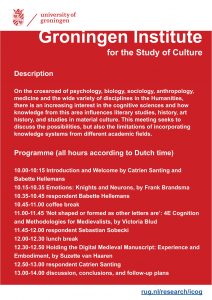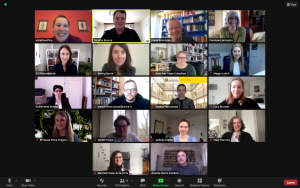 Our project’s Principal Investigator, Professor Sif Ríkharðsdóttir, has published the article ‘Poetic Sensorium and Aesthetic Objectification in the Middle English Pearl’ in Exemplaria 32.4 (2020). The article is available online here.
Our project’s Principal Investigator, Professor Sif Ríkharðsdóttir, has published the article ‘Poetic Sensorium and Aesthetic Objectification in the Middle English Pearl’ in Exemplaria 32.4 (2020). The article is available online here.
Abstract: This article considers the ways in which sensory perception underlies the aesthetic appreciation of the Middle English Pearl. In particular it focuses on how sensory description and perception is used to interlink the different aspects of the poem’s representational properties, such as its form, its thematic content, and the narrative medium, to engage the audience. The article therefore addresses the intricate correlation between the poetic form of Pearl and the function of sensory perception within the poem as means of mediating between the external audience and what might be termed the internal poetic sensorium. Sensorium is here conceived as the entirety of the sensory realm of an individual, including the external objects, sounds or smells along with perceived sensations, perception and the cognitive processes associated with deciphering and processing the sensorial input. Poetic sensorium instead refers to the fictive description of a sensory realm and experiences that are actualized and materialized via the process of reading or listening. In the article it is argued that the haptic sense is the fulcrum on which much of the poetry turns, revealing the underlying implications of the poem’s function as a memorializing artifact.





